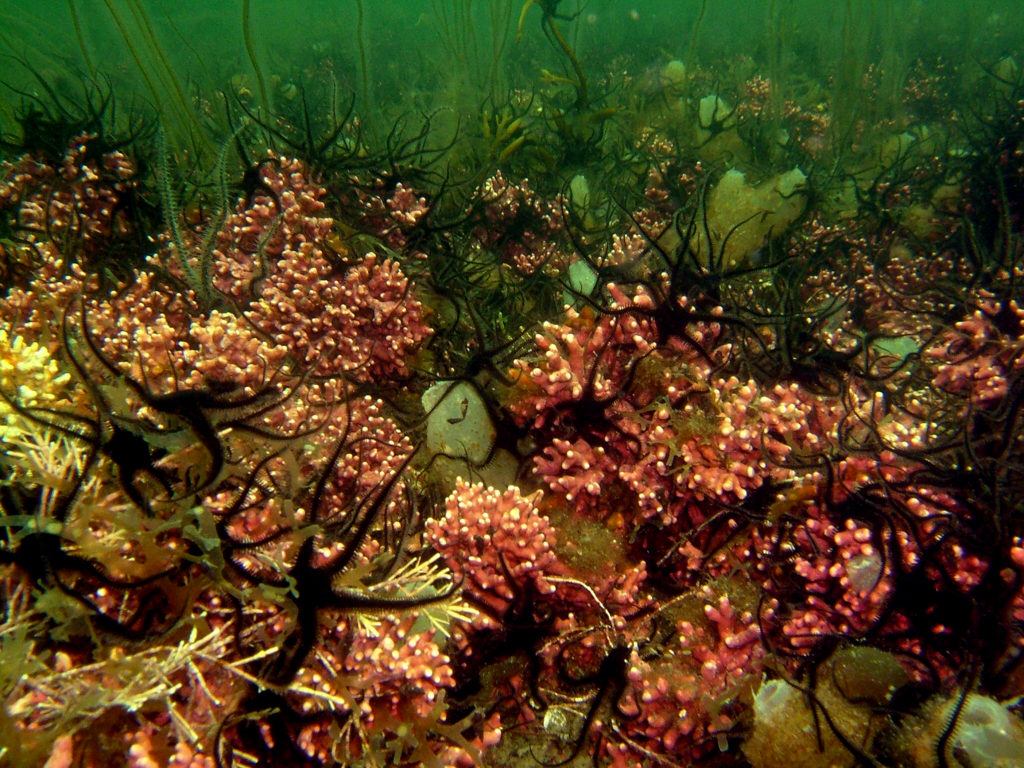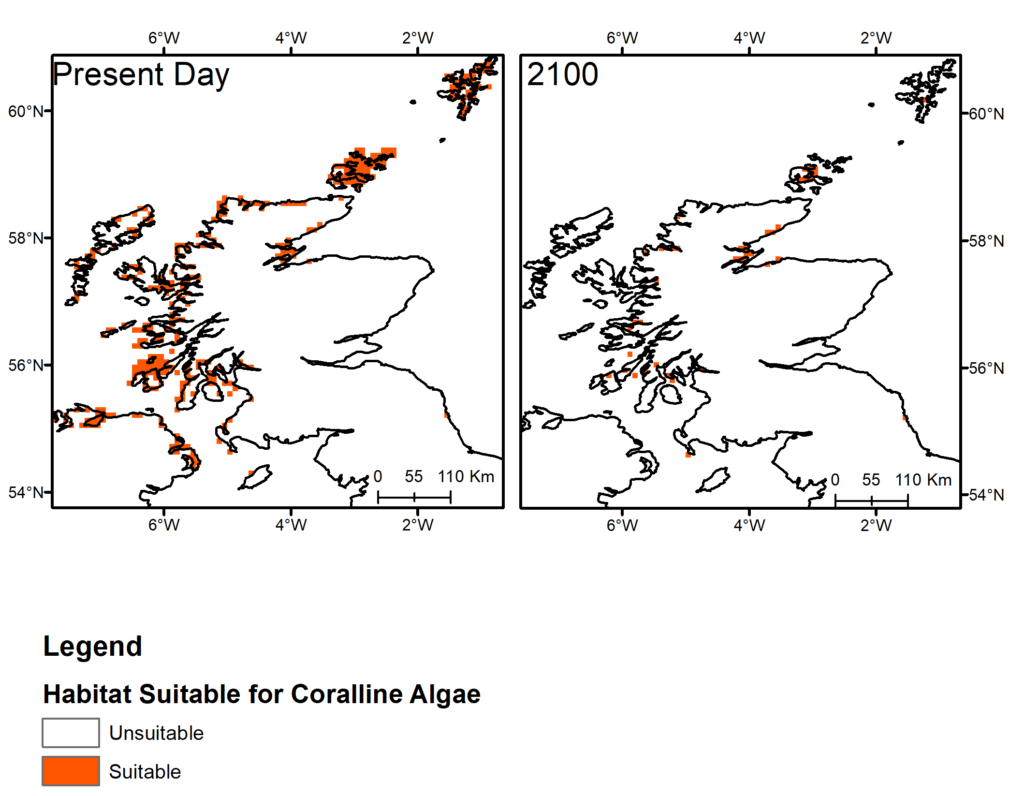Maerl beds are one of the world’s most biodiverse habitats – but most people haven’t even heard of them! Maerl, a free-living red seaweed with a hard calcium carbonate skeleton, can aggregate on the seafloor to form a complex three-dimensional habitat very similar to coral reefs. These bed structures support many flora and fauna, including commercially important ones, like juvenile cod, hake and scallops.

Although maerl beds (also called ‘rhodolith beds’) occur globally, from tropical waters to the high Arctic, Scotland’s coasts and sea lochs are a European stronghold. Despite their importance, our new research, published in Frontiers in Marine Science (here), suggests that this habitat could face massive losses in the next 80 years due to climate change.
By employing species distribution modelling techniques we have modelled maerl bed distribution around Scotland under all the Intergovernmental Panel on Climate Change (IPCC) Representative Concentration Pathways for 2050 and 2100. Sadly, even under the ‘best case’ scenario (Representative Concentration Pathway [RCP] 2.6), which represents a significant decline in greenhouse gas emissions from present levels, maerl beds are still predicted to decline 38% by 2100! In contrast the ‘business as usual’ model (RCP 8.5) where emissions remain at present levels, predicts an 84% decline.

To carry out these predictions, we investigated which environmental factors are most important in shaping maerl bed distribution around Scotland. These were found to be: seabed depth, temperature at seabed and light at seabed. As the deepest known living photosynthetic organism, this is maybe not too surprising- they need light to live- but so little is known about maerl beds this research is one of the first to investigate regional-scale distribution and their environmental preferences. The lack of information on maerl beds makes the threat of climate change even more devastating – there’s still so much we don’t know about them.
As global ocean temperatures rise due to climate change there will likely be a resulting loss of maerl populations, especially those already at the edges of their ranges. Using our information about the environmental conditions maerl needs to thrive, it seem unlikely they will be able to compensate for rising temperatures by moving into deeper water (where it’s cooler) as light becomes limited. Therefore, it seems likely that ranges may contract through time and many populations will be lost due to climate change.
Using this new understanding of Scottish maerl bed environmental requirements, we were also able to predict some areas where maerl beds may be able to persist in the future due to local climatic conditions. These areas, including Loch Laxford, mainland Orkney and mainland Shetland, present good candidates for targeted conservation to maximise long-term survival of both maerl beds and the many species they support. While it is heartening to know we are unlikely to lose all of Scotland’s maerl beds, there are lots of other associated issues from only having small isolated populations. This is particularly true for maerl because it is incredibly slow growing (only 0.2mm per year in Scotland), and so is unlikely to adapt to coming changes.
We hope that the methods we have developed here, can be applied to other areas as well, allowing us to better understand how climate change is going to affect maerl beds worldwide. This knowledge will allow for conservation management planning but also draw further attention to the climate crisis facing today’s oceans.
This research was funded by NERC and Scottish Natural Heritage and led by Cornelia Simon-Nutbrown a joint Heriot-Watt and RBGE PhD student.
